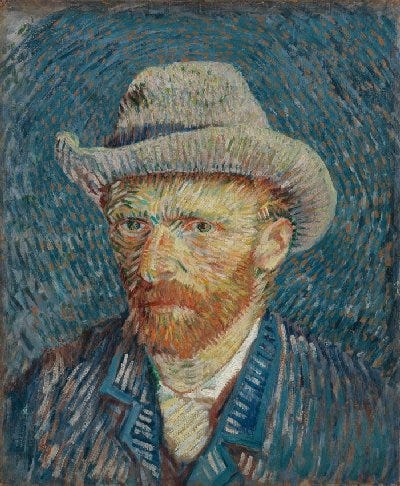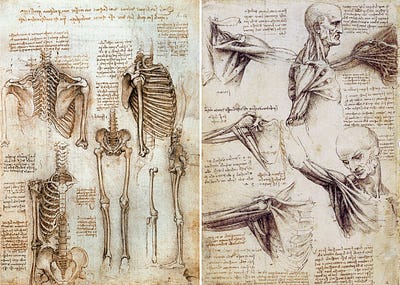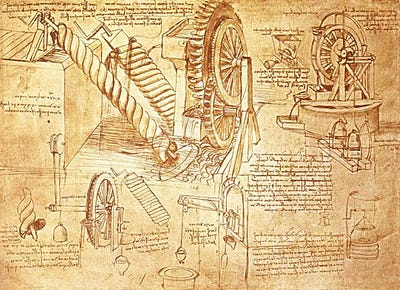Decoding Greatness: Simple Truths History Teaches Us
An insight into what sets enduring legends apart from the forgotten.

Growing up, I watched my favourite actors fade away into oblivion. I’ve also seen many writers lose their touch. And probably, someone’s favourite singer is singing their last hit right now. These great artists are extremely dedicated to their craft, yet they seem to disappear over time.
In fact, it’s rare that people ever succeed enough to be called “legends”. How many musicians were famous during the time of Mozart? Yet, how many do we know now? I mean, their peers who remain are more famous than they have ever been. So, why are they unknown? Did Mozart possess some secret of success that others didn’t? I doubt it. Did those who failed not work as hard as the ones who succeeded? That doesn’t seem true either. So, what’s causing this difference?
I wanted answers. And where better to look for them than the stories of those who stood the test of time?
The “Why” of it all…
Before I speak further on this topic, it’s best to answer the question, “Why does this matter?” After all, not everyone is destined to be a legend, so why struggle with leaving a legacy?
The answer to this is pretty simple. Legacy is one of the fundamental needs of people. Everyone hates their mortality, and legacy is the only hope for them to at least survive in the minds of those who remain. If they find that this is very rarely possible, many lose hope in themselves and fall into a spiral of identity crisis, dissatisfaction and possibly depression.
I experienced this personally. At one point, I questioned the value of hard work and dedication. And if history is any indication, this process of being forgotten will only accelerate from now. My question was, “Why struggle when everything ends in vain anyway?”
Unfortunately, I didn’t have enough maturity to find the answer to this question in the past. Now, though, I believe I’ve found the direction to where the answer lies. And so, I want to share this journey with you — hoping that, in the process, we might find some answers together.
The “Changing” Times.
“The times change” is often the excuse for something being forgotten. So, I think it’s better to start our journey there.
A few decades ago, the word “work” referred to working in a factory or doing a more laborious task, while today, it refers to working in front of a PC or a phone. So, it’s obvious that things change. Yet, very few domains survive these changing times. I believe studying the legends of these domains could help us find the road to legacy.
What do you think survived the tests of time?
While many things have changed with time, one domain stands tall and unchanged: Art. (At least, that’s what’s famous.) Art is a powerful avenue for us to express our emotions. And, as social animals, we are wired to search for better ways to express our thoughts and, more importantly, emotions. Meaning we are wired to pursue art in one form or another. In this search, we are compelled to start changing the stuff. We write interesting stories, sing different songs, and do new, more interesting things…until what we do becomes old and ultimately gets replaced by the next big hit.
But while most things fade, some art forms stand the test of time. Paintings of Van Gogh, Da Vinci, Monet, sculptures of Michelangelo, music by Beethoven, Bach, Chopin and the efforts of many great artists can still be enjoyed today.
What made it possible for them to produce something so unique? What kind of environments enabled them to achieve such feats? Was it the environment, the person’s commitment or just pure luck?
To understand what enabled them to achieve such feats, we should take some time and study their lives. Since we don’t have much time here, let’s focus on a few key figures and see what we learn from their journeys.
The Criticised ones and The “Talented” ones.
What’s the first thing that comes to your mind when you think about the life of a legend? It’s likely a story of struggle, rejection and relentless pursuit of dreams. The life of an ideal protagonist. That does, indeed, make a good narrative. But, the truth? Well, it’s far less dramatic.
Yes, many were shunned in their initial years and some throughout their lives. But, some were also hailed as geniuses by the time they were five. To understand what truly makes us a legend, we must look deeper at both cases. In that sense, we need to look at the artists whose lives couldn’t be more different. And surprisingly, I never had to look far.
Vincent Van Gogh and Wolfgang Amadeus Mozart. Both are considered two of the greatest artists of the millennium, but the former’s story completely contrasts the latter. Still, both are legends nonetheless.
Vincent Van Gogh spent his entire life in obscurity and was financially supported by his brother. Throughout his life, Van Gogh was constantly sorry towards his brother. His paintings were considerably outside the mainstream, and he longed for the day his works would be considered as ‘good’ as the artists he admired. Acceptance of his work and his reputation as a great artist happened only after his death (believed to be self-inflicted), thanks to his brother’s efforts that his sister-in-law continued. He was never able to generate a living with his paintings in his life, yet he never stopped creating them.


Whereas Mozart’s life, as we all know, completely contrasts this. He was called a prodigy from childhood and showed immense musical talent. Despite his short life, he rapidly composed his pieces, earning the position of a court musician (which he wasn’t satisfied with). Despite his self-induced financial worries, he was never unpopular. He chose to live beyond his means, which contributed to his financial struggle.
Neither of these legends is an exception. Many great artists died as poor and unrecognised, while some were widely famous. Yet these two have something in common. Both produced a ridiculous amount of symphonies and paintings. One produced more than 800 pieces, symphonies, while the other produced around 900 paintings and more than 1000 sketches/drawings.
Is it the sheer, blind hustle, then, that becomes a reason for success?
Hustle seems the obvious answer…but that’s not it.
I refuse to acknowledge blind hustle as the right answer. However, I believe it to be hiding the other, more important factors.
Obsession.
If you hadn’t noticed till now, their obsession towards their craft pushed them to pursue their pinnacle. Van Gogh’s desire to make his piece better than his previous one is clear from his letters. Mozart is known for his obsession towards music itself. He loved playing, listening and practising different pieces. Another example that I’ll explore later on is Leonardo Da Vinci. He is another legendary figure who lived more than 600 years ago and is still known today. He studied anatomy, physics, and many other domains to improve his paintings. This obsession could be found in any writer. This obsession was to improve their craft and nothing else. They didn’t think of this as a daily routine. They never considered it as such. They just wanted to produce better stuff. And they tried their best.
The consistency of improvement, not the consistency of action, makes one great.
Curiosity
Despite Mozart and Van Gogh being curious about various things, it was harder to find many references, as most of the literature’s focus was on their craft. Yet, I wanted to confirm if curiosity has any role as it was repeated in many articles. Hence, I reached into the story of Leonardo da Vinci. Why? He is known for his curiosity in different fields. Along with this obsession towards paintings, he was also proficient in many things.



His imagination often complemented his obsession with art. He wanted to devise a machine that could fly; he studied the field of aerodynamics and made many prototypes of devices that could fly. He wanted to understand how light behaves, and he studied that extensively so that he could paint a reflection of the surroundings in an orb. He was curious about how the body is actually structured to the point that he often cut open dead bodies to learn. He even designed a few weapons of war in his life. And more importantly. He ensured that his living and painting could help him pursue these curiosities. We’re lucky that some of his notes are still preserved to this day.
Ultimately, his curiosities influenced his works and helped to improve his craft. Similarly, Mozart’s curiosity about music in its entirety had a significant impact on his compositions. Frankly, it’s impossible to imagine any great artist not driven by curiosity.
I won’t claim that these two factors alone are enough to make you a legend. But I am certain that they are essential. Obsession with improvement will fuel your passion, while curiosity helps balance that obsession and keeps you re-oriented toward your goals.
Of course, luck also plays a minor part in the journey. However, I am not knowledgeable yet, to explore beyond these two. If you think there’s something else that’s important, I’d love to hear your thoughts.
I hope you found something of value from this article. I look forward to having interesting discussions with you. Thanks for staying till the end. Until next time — happy reading!
Follow The Story Taste to stay in touch with my thoughts!


